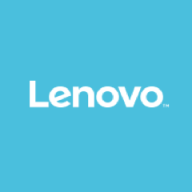

Nagios XI and Lenovo XClarity Controller are two prominent solutions for IT infrastructure monitoring and management. While Nagios XI is praised for its flexibility, Lenovo XClarity Controller often receives higher marks for ease of use, making it a favorable choice for comprehensive hardware management.
Features: Nagios XI is valued for its extensive plugin ecosystem, proactive monitoring capabilities, and flexibility. Lenovo XClarity Controller stands out with seamless hardware integration, real-time analytics, and comprehensive hardware management.
Room for Improvement: Users suggest that Nagios XI could benefit from a more modern interface, simplified configuration processes, and enhanced user documentation. Lenovo XClarity Controller users note the need for better third-party integrations, more detailed documentation, and improved software updates.
Ease of Deployment and Customer Service: Nagios XI users appreciate the variety of deployment options but mention a steep learning curve and mixed customer service. Lenovo XClarity Controller is noted for its straightforward deployment and responsive customer service.
Pricing and ROI: Nagios XI generally has a lower initial setup cost and is seen as cost-effective for network monitoring. Lenovo XClarity Controller, despite a higher setup cost, is viewed as providing better ROI due to its comprehensive hardware management capabilities.


Lenovo ThinkSystem servers contain an integrated service processor, XClarity Controller (XCC), which provides advanced service-processor control, monitoring, and alerting functions. This document summarizes the features of XCC and the upgrades available to ThinkSystem servers.
Nagios XI provides monitoring of all mission-critical infrastructure components, including applications, services, operating systems, network protocols, systems metrics, and network infrastructure. Third-party add-ons provide tools for monitoring virtually all in-house and external applications, services, and systems.
Nagios XI uses a powerful Core 4 monitoring engine that provides users with the highest levels of server monitoring performance. This high degree of performance enables nearly limitless scalability and monitoring powers.
With Nagios XI, stakeholders can check up on their infrastructure status using the role-based web interface. Sophisticated dashboards enable access to monitoring information and third-party data. Administrators can easily set up permissions so users can only access the infrastructure they are authorized to view.
Nagios XI Benefits and Features
Some of the benefits and top features of using Nagios XI include:
Reviews from Real Users
Nagios XI stands out among its competitors for a number of reasons. Several major ones are its integration options and monitoring abilities, as well as its alerting features.
David P., a senior DevOps engineer at EML Payments Ltd, writes, “We use Nagios as a network discovery tool. We use Nagios to maintain our uptime statistics and to monitor our services. It has allowed us to be much more sophisticated in our monitoring and alerting.”
An IT-OSS manager at a comms service provider notes, “Nagios XI has a custom API feature, and we can expose custom APIs for our integration. This is a great feature.”
We monitor all Server Monitoring reviews to prevent fraudulent reviews and keep review quality high. We do not post reviews by company employees or direct competitors. We validate each review for authenticity via cross-reference with LinkedIn, and personal follow-up with the reviewer when necessary.